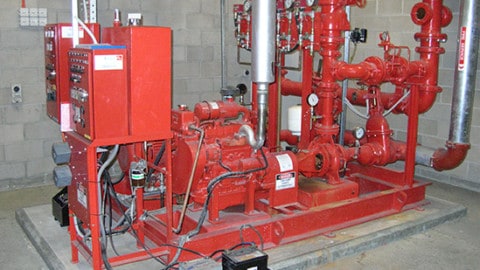The PIA’s Australian Pump Technical Handbook is a cornerstone text for the Australian pump industry. In this ongoing series, we feature abridged chapters from the classic book to showcase the various areas covered and to reacquaint readers with the technical aspects of pumps. In this issue, we explore the concepts of specific speed and system head.
Specific speed
Specific speed is a criterion used to describe the discharge characteristics of a pump. Specific speed is the speed at which an ideal pump, geometrically similar to the actual pump, will raise a unit of volume in a unit of time through a unit of head. The specific speed of a pump is calculated from pump speed, total head and flowrate data at BEP.
The normal range of specific speed is from 500 to 12,500. Generally, pumps with a high flowrate and low head have high specific speed values, while pumps with high head at a low flowrate have lower specific speeds.
The specific speed relates to the geometry of the pump rotor and is independent of pump size.
Specific speed can be used to categorise centrifugal pumps, allowing the pump user to determine the type of pump required for a given application. Choosing a more efficient pump for an application can significantly reduce costs.
Specific speed and efficiency
The maximum efficiency a pump can attain is heavily reliant on specific speed. In general, efficiency increases as the specific speed rises.
Specific speed not only relates to impeller geometry, but also the trend of the characteristic curves for total dynamic head, power consumption and efficiency.
At low specific speed, power consumption is at a minimum of zero flowrate, and rises as flowrate does. This is an overloading characteristic and the motor must be sized to meet the conditions that may occur during operation.
At medium specific speed, this is a non-overloading characteristic and the pump can operate safely across the entire flow range with a motor sized to meet the peak requirements.
High specific speed pumps have a falling power characteristic with maximum power occurring at minimum flow. This means they should not be used in zero flow conditions. Discharge throttle valves or bypass systems should be avoided and variable speed drives should be considered for such systems.
System head
In a general sense, ‘head’ is a measure of the pressure imparted to a fluid in a pump system, referring to the height (in metres) of a fluid column that can be supported by the pump’s output. Mathematically, ‘head’ is the energy per unit weight of the pumped liquid in a system. Knowing the total head of a system is necessary in order to calculate values such as the specific speed of a pump system and determine if a pump is operating efficiently.
However, head can be lost in numerous ways throughout a system and a number of different factors of the system in question will affect the value of the system’s head.
Friction losses in pipes and fittings
As a liquid flows through a system the resistance it encounters results in a loss of head. This loss is commonly known as ‘friction loss’ and is measured in metres of liquid or head.
The head loss in a given system is a function of the roughness of the pipe’s interior surface, the length of pipe through which the fluid must travel, the fluid velocity and fluid viscosity.
Additional losses are generated by obstructions to the flow path caused by valves, fittings and other system components, bends and changes in direction, and changes in the cross section or shape of the flow path. Head can also be lost at the inlet and exit of a piping system.
The friction losses throughout a system can be calculated by accounting for these factors using equations, tables and formula included in the Australian Pump Technical Handbook and Pipe Friction Handbook.
The uses of head
For centrifugal and rotodynamic pumps ‘head’ is the parameter directly relating to the energy available to overcome pump inlet losses. This relationship is more complicated for other types of pump, such as reciprocating positive displacement pumps, where the flow varies during the pumping cycle. For these types of pumps valve lift pressures and fluid acceleration and deceleration may affect the system head. Therefore the guidance of the pump manufacturer may be necessary to ensure that all necessary factors have been considered.
Further information and detailed diagrams, equations and schematics can be found in the Australian Pump Technical Handbook, available from the PIA website.
This is an edited extract from the Australian Pump Technical Handbook which can be ordered online.
















